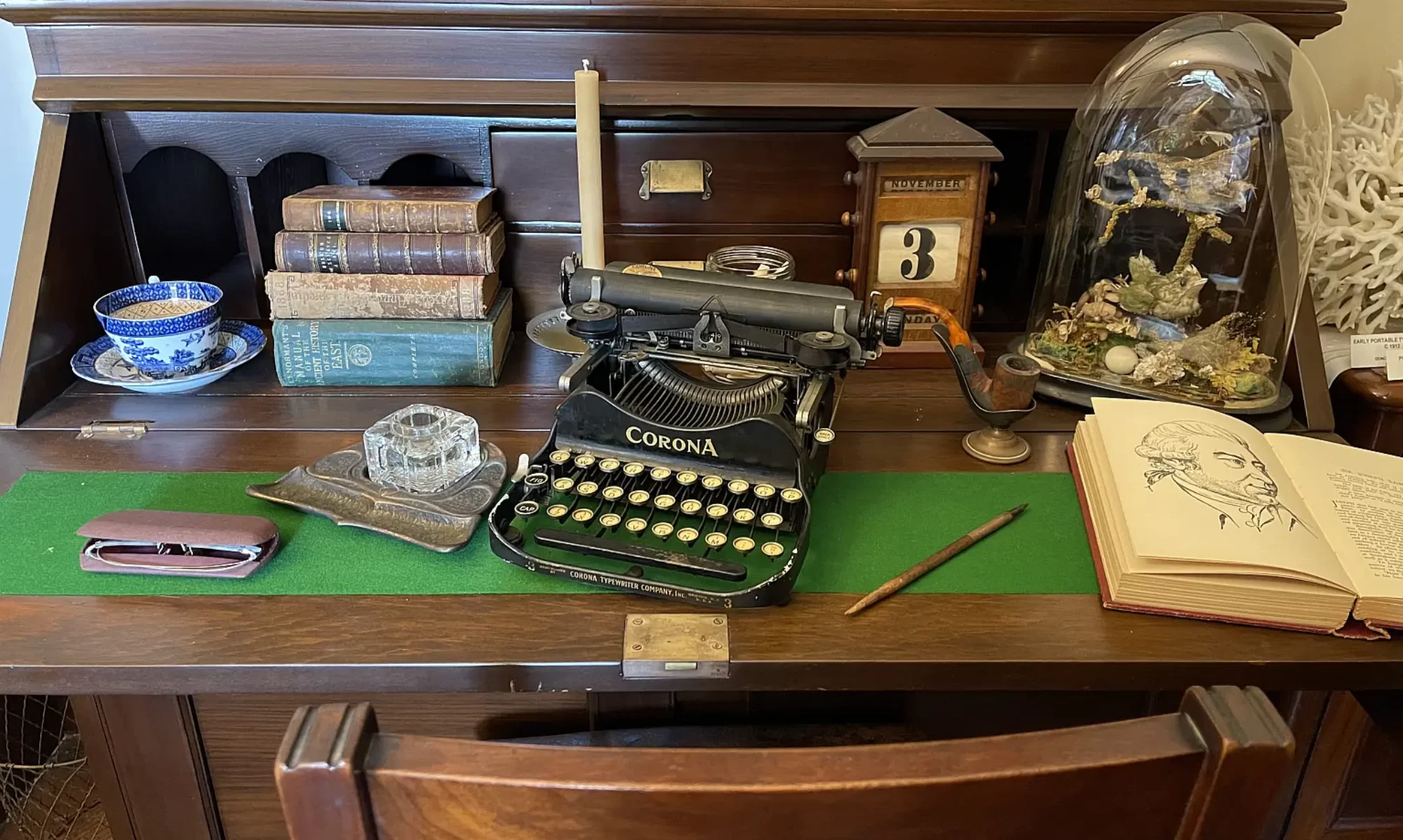based on some recollections of Mrs. A. B. Christison
In the mid 1880’s Henry Kinsela took up 27 acres of timbered land at the junction of Forest and Stoney Creek Roads. Here he built a gracious two-storied mansion “Kinsel Grove”, which faced east with a delightful view of Botany Bay. The entrance gates were in Forest Road and a curved driveway brought one to the front steps. The wide door opened into a spacious hail, on the left of which was Kinsela’s study. Here he spent most of his time guarded by a huge dog. This dog was very friendly to friends but always barred the way to strangers. The grounds were divided into three sections. These surroundings of the house were laid out in lawns and gardens. Here a lot of entertaining took place always with a brass band in attendance. From the back of the house to what is now Highworth Avenue were the coach house (later to become a bakery) groom’s residence, stables and a paddock for the horses. A little distance from the front of the house and running to the junction of the two roads was a park like enclosure where shady gums and English trees grew and several deer grazed.
Apart from his interest in his father’s funeral business, Kinsela owned huge areas of real estate. He took an intimate interest in his church giving considerable financial assistance to St. George’s Church at Hurstville as well as a large and inspiring stained glass window which he presented in 1889. He was one of the prime movers in the founding of Christ Church at Bexley which also he richly endowed.
Although he was handicapped with a practically useless right arm, he was a particularly keen sportsman. As well as deer, he kept at “Kinsel Grove” kangaroos, wallabies, emus, hares and a string of well-known racehorses. He was also the owner of a remarkable trotting stallion “King Harold” and three or four beautiful Hungarian ponies. He was a frequent exhibitor at the Royal Show and won many prizes.
It is interesting to note that in spite of his crippled right arm he was able to drive single-handed a coach and six horses, a feat made possible only by the unusual influence he had with these animals.
With Charles Lardner he convened the first cricket meeting which ultimately became the St. George Cricket Club and had a cricket pitch laid on his back paddock. He became the first secretary of the club and was the president of the original St. George band to which he made a munificent gift of £100 for the purchase of the band’s instruments.
At Burraneer Bay, an arm of the Port Hacking River, Henry Kinsela built his country residence – a large stone cottage set in grounds terraced to the water’s edge. Here a boatshed was built and also a swimming pool. On the rocks nearby was a plentiful supply of oysters. Kinsela gave the band many enjoyable picnics at his Port Hacking residence and it was no uncommon sight in those days to see the St. George Band being rowed around the port in Mr. Kinsela’s clipper whale boat, while the dulcet music wakened echoes across the bays.
This home still stands as does the lovely avenue of gum trees which led down to it.
In March 1915, this patriotic and public spirited gentleman and sportsman passed away, mourned by a widely drawn circle of friends and admirers and lies peacefully in the little old churchyard at St. George’s.
This article was first published in the February 1963 edition of our magazine.
Browse the magazine archive.

